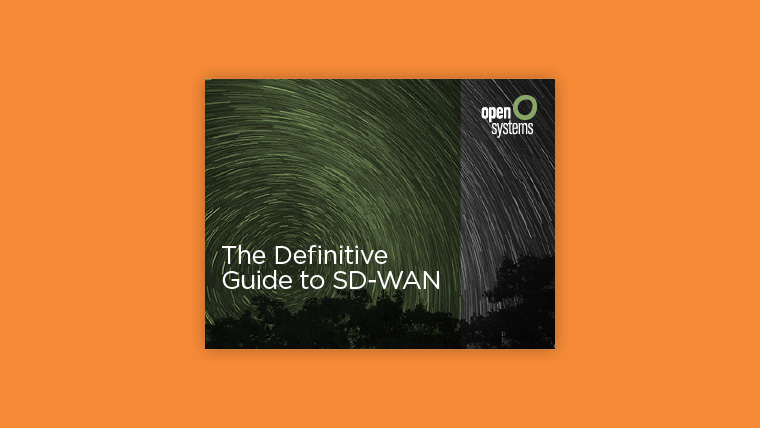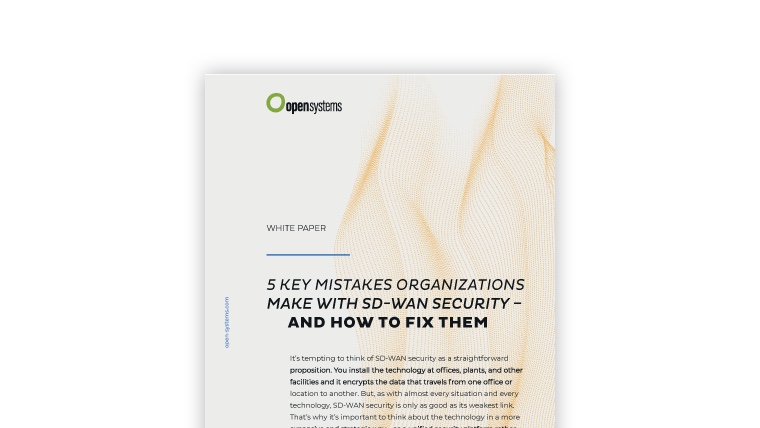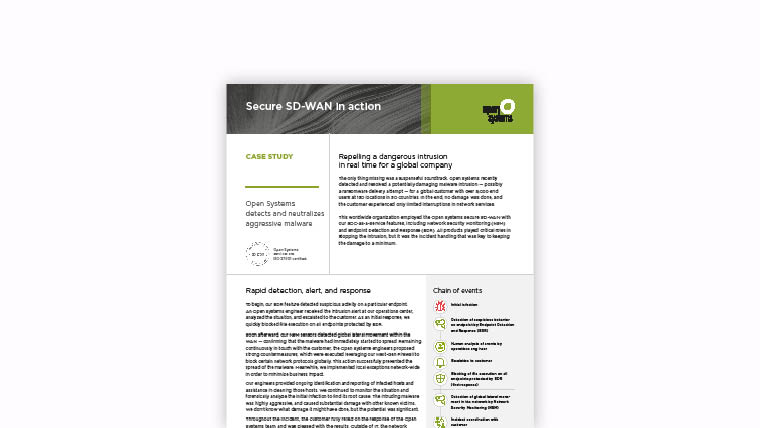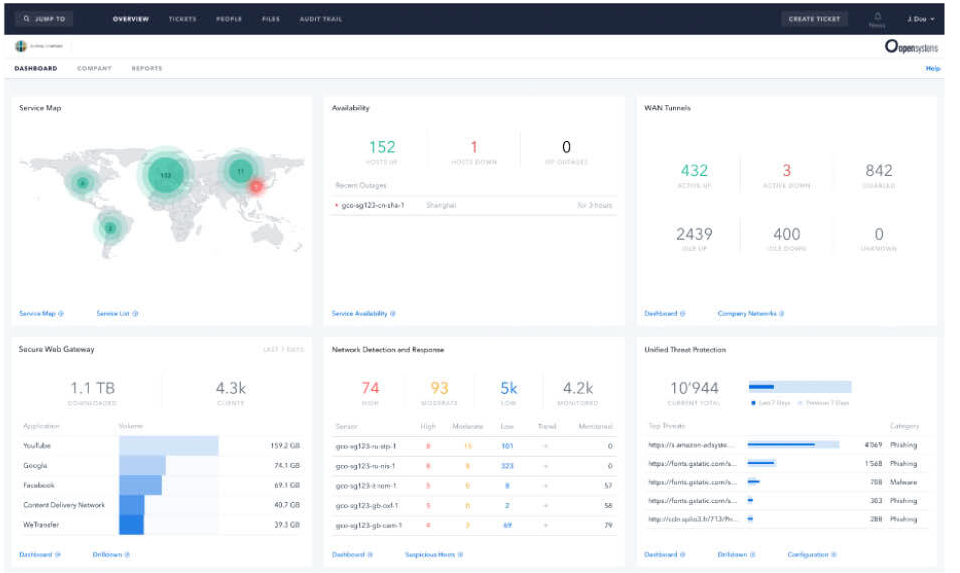
What is Hybrid-WAN?
MPLS WANs are too expensive and not required for all applications and network payloads.
MPLS networks deliver reliable and guaranteed performance between geographically distributed sites. They are designed for real-time and transaction-based applications where connection performance must be consistent and reliable. Unfortunately, MPLS WANs are expensive compared to alternatives like the internet, which uses technologies such as a Digital Subscriber Line (DSL), cable modem, fiber, satellite, and wireless.

On average, roughly 70% of enterprise applications run on the cloud or with a SaaS provider

The SD-WAN market is expected to grow from USD 1.9 billion in 2020 to USD 8.4 billion in 2025

The growth of the global SD-WAN market from 2020 to 2025 represents a CAGR of over 34%
When traditional MPLS WANs are saturated, the user experience becomes poor, and business operations suffer.
IT professionals find it difficult to justify the cost of MPLS for all applications. The Mbps/mth cost of MPLS is many magnitudes higher than standard broadband connections – sometimes over 100x. It’s difficult to justify purchasing expensive additional MPLS connections when broadband internet is more than adequate and readily available at a significantly lower cost.

Reduce Connection Costs While
Improving the User Experience
Hybrid WAN Management with Open Systems
- Next-generation firewalls with granular global and local security zoning
- Secure Web and Email Gateways
- Worldwide secure entry points for protecting mobile users and remote facilities
- Endpoint threat detection and response
- Globally distributed and meshed security sensors
- Edge to core event logging, machine learning, and AI-driven threat detection
Offload Traffic from Costly MPLS WANs
IT professionals are finding that broadband connections are perfectly adequate and simpler to acquire and manage. Not all applications and traffic can use the internet since performance and latency are not 100% guaranteed.
The answer is a Hybrid WAN. A Hybrid WAN solution uses both MPLS and internet connections to carry traffic to and from sites. Application traffic routes are not predetermined but based on the required service level.
Hybrid WANs also enable Hybrid Clouds, which are environments where private clouds (HPE, VMware, Microsoft, etc.) and public clouds (AWS, Google, Azure, etc.) are connected via a WAN. Applications and their resources can reside and migrate seamlessly across multiple private and public cloud environments.
Managing Hybrid WANs requires SD-WAN (software-defined WAN) technology. SD-WAN technology overlays the Hybrid WAN infrastructure. An intelligent SD-WAN software layer manages both MPLS and internet connections and routes. It provides simpler management of the entire network.
The SD-WAN continually monitors application performance and network traffic. The data is collected in real-time and used to intelligently determine and dynamically configure the best routes to meet or exceed service level requirements.
Security – Security – and More Security
Hybrid SD-WANs reduce costs and select the best routes to ensure application performance, but they don’t’ inherently offer robust cybersecurity. Hybrid SD-WANs, specify those that need to secure Hybrid Clouds, will require security solutions and additional staff to manage, detect, and remove cyber threats and intrusions.
Hybrid WAN providers should be experts in Hybrid WAN design. Any Hybrid WAN must include SD-WAN technology and a comprehensive multi-layer suite of integrated cybersecurity technologies. Security technologies should function in unison and be seamlessly layered over the Hybrid SD-WAN infrastructure.
The SD-WAN and integrated cybersecurity should be simple to administer through a single pane of glass and managed 24×7 by security experts.
SD-WAN devices and SD-WAN technologies which provide cybersecurity include,
IT professionals are finding that broadband connections are perfectly adequate and simpler to acquire and manage. Not all applications and traffic can use the internet since performance and latency are not 100% guaranteed.
The answer is a Hybrid WAN. A Hybrid WAN solution uses both MPLS and internet connections to carry traffic to and from sites. Application traffic routes are not predetermined but based on the required service level.
Hybrid WANs also enable Hybrid Clouds, which are environments where private clouds (HPE, VMware, Microsoft, etc.) and public clouds (AWS, Google, Azure, etc.) are connected via a WAN. Applications and their resources can reside and migrate seamlessly across multiple private and public cloud environments.
Managing Hybrid WANs requires SD-WAN (software-defined WAN) technology. SD-WAN technology overlays the Hybrid WAN infrastructure. An intelligent SD-WAN software layer manages both MPLS and internet connections and routes. It provides simpler management of the entire network.
The SD-WAN continually monitors application performance and network traffic. The data is collected in real-time and used to intelligently determine and dynamically configure the best routes to meet or exceed service level requirements.
Hybrid SD-WANs reduce costs and select the best routes to ensure application performance, but they don’t’ inherently offer robust cybersecurity. Hybrid SD-WANs, specify those that need to secure Hybrid Clouds, will require security solutions and additional staff to manage, detect, and remove cyber threats and intrusions.
Hybrid WAN providers should be experts in Hybrid WAN design. Any Hybrid WAN must include SD-WAN technology and a comprehensive multi-layer suite of integrated cybersecurity technologies. Security technologies should function in unison and be seamlessly layered over the Hybrid SD-WAN infrastructure.
The SD-WAN and integrated cybersecurity should be simple to administer through a single pane of glass and managed 24×7 by security experts.
SD-WAN devices and SD-WAN technologies which provide cybersecurity include,
- Next-generation firewalls with granular global and local security zoning
- Secure Web and Email Gateways
- Worldwide secure entry points for protecting mobile users and remote facilities
- Endpoint threat detection and response
- Globally distributed and meshed security sensors
- Edge to core event logging, machine learning, and AI-driven threat detection
Open Systems SD-WAN
Our managed SD-WAN solution provides WAN automation, performance, and security for cloud-first and widely distributed organizations.
Contact our customer advocates to learn more or to obtain an assessment of how our managed SD-WAN service with integrated cybersecurity services can manage and secure your Hybrid WAN.

Leave Complexity
Behind
To learn how Open Systems SASE Experience can benefit your organization, talk to a specialist today.
Contact Us



